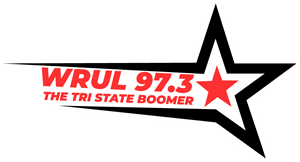The Illinois Department of Employment Security (IDES) announced today that the unemployment rate decreased by -0.2 percentage point to 4.4 percent in April and nonfarm payrolls increased by +4,700 jobs over-the-month, based on preliminary data provided by the U.S. Bureau of Labor Statistics (BLS) and released by IDES. The March job gain was revised up from its initial report to show a slight gain. (+2,500 jobs versus -2,100 jobs).
Job growth improved in the February to April period posting average monthly gains of +7,500 jobs, an increase over the prior three-month period (November 20107 to January 2018) with average monthly gains of +1,700 jobs.
“Illinois’ unemployment rate decreased for the fourth month in-a-row to its lowest level since 2006,” said IDES Director Jeff Mays. “At the same time, online job postings on IllinoisJoblink are up nearly 8 percent from a year ago, so job opportunities have improved.”
“We continue to work to bring new opportunities to communities across Illinois,” said Director of the Illinois Department of Commerce Sean McCarthy. “By attracting new investment and working with existing employers on workforce needs, we are cultivating a competitive economy and business-friendly environment that will boost growth and ensure a better future for Illinois.”
In April, the three industry sectors with the largest gains in employment were: Professional and Business Services (+2,700); Manufacturing (+1,600); and Leisure and Hospitality (+1,300). The industry sector with the largest payroll decline was: Government (-1,900).
Over-the-year, nonfarm payroll employment increased by +53,000 jobs with the largest gains in these industry sectors in April: Leisure and Hospitality (+10,600); Manufacturing (+10,100); and Government (+9,700). The industry sector with the largest over-the-year declines was: Information Services (-3,300). Illinois nonfarm payrolls were up +0.9 percent over-the-year in sharp contrast to the nation’s +1.6 percent over-the-year gain in April, but it was the largest over-the-year gain since June 2017.
The state’s unemployment rate is +0.5 percentage points higher than the national unemployment rate reported for April 2018, which dropped to 3.9 percent. The Illinois unemployment rate is down -0.5 percentage points from a year ago when it was 4.9 percent. The Illinois jobless rate last stood at 4.4 percent in December 2006.
The number of unemployed workers decreased -3.5 percent from the prior month to 287,200, down -9.7 percent over the same month for the prior year. The labor force dipped -0.1 percent over-the-month, but it was up +0.1 percent over the prior year. The unemployment rate identifies those individuals who are out of work and are seeking employment.
An individual who exhausts or is ineligible for benefits is still reflected in the unemployment rate if they actively seek work. To help connect jobseekers to employers who are hiring, IDES’ maintains the state’s largest job search engine, IllinoisJoblink.com (IJL), which recently showed 57,112 posted resumes with 198,608 jobs available.
Seasonally Adjusted Unemployment Rates
Illinois Seasonally Adjusted Nonfarm Jobs – by Major Industry
• 1976-2017 seasonally adjusted labor force data for Illinois, and all other states, have been revised as required by the U.S. Bureau of Labor Statistics (BLS). The monthly historical revisions to state labor force estimates reflect new national benchmark controls, state working-age population controls, seasonal factors, as well as updated total nonfarm jobs and unemployment benefits claims inputs. Illinois labor force data were also smoothed to eliminate large monthly changes as a result of volatility in the monthly Census Population Survey (CPS) and national benchmarking. In February 2018, the BLS also introduced a new seasonal adjustment procedure for state labor force estimates which resulted in the entire monthly historical series for Illinois and all other states being replaced. For all of these reasons, the comments and tables citing unemployment rates in previous state news releases/materials may no longer be valid.
• Monthly seasonally adjusted unemployment rates for Illinois and the Chicago-Naperville-Arlington Heights Metropolitan Division are available here: Illinois & Chicago Metropolitan Area Unemployment Rates
• Monthly 2013-2017 seasonally adjusted nonfarm payroll employment data for Illinois have been revised. To control for potential survey error, the estimates are benchmarked annually to universal counts derived primarily from unemployment insurance tax reports. Effective with January 2018 estimates, the BLS introduced concurrent seasonal adjustment for monthly state nonfarm payroll employment estimates
• Not seasonally adjusted jobs data with industry detail are available at Not Seasonally Adjusted Jobs. “Other Services” include activities in three broad categories: Personal and laundry; repair and maintenance; and religious, grant making, civic and professional organizations. Seasonally adjusted employment data for subsectors within industries are not available
About IDES : IDES encourages employment by connecting employers to jobseekers, provides unemployment insurance benefits to eligible individuals, produces labor market data and protects taxpayers from unemployment insurance fraud. Visit the Department’s website at www.ides.illinois.gov for more information. You can also follow IDES on Twitter and Facebook.














